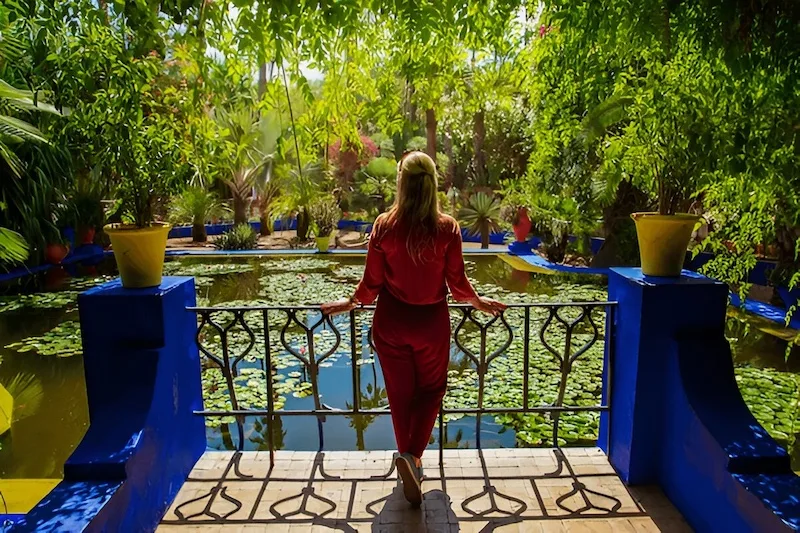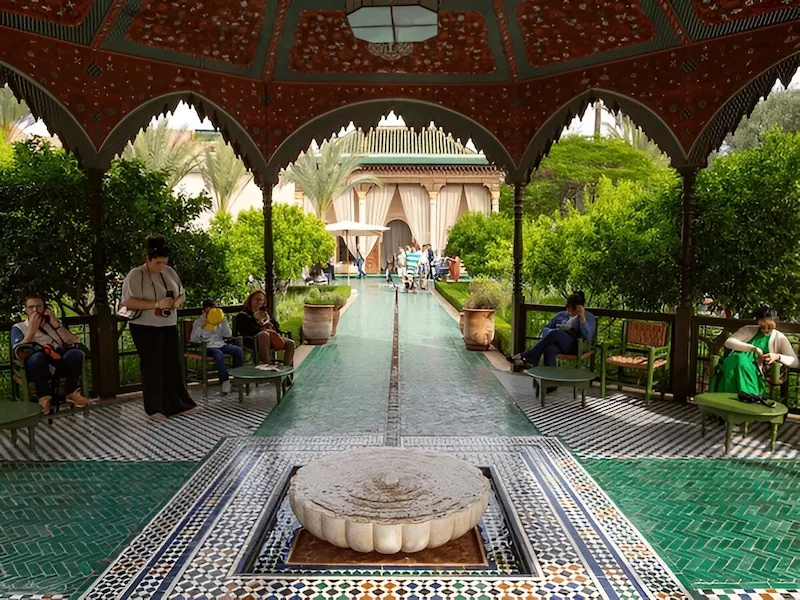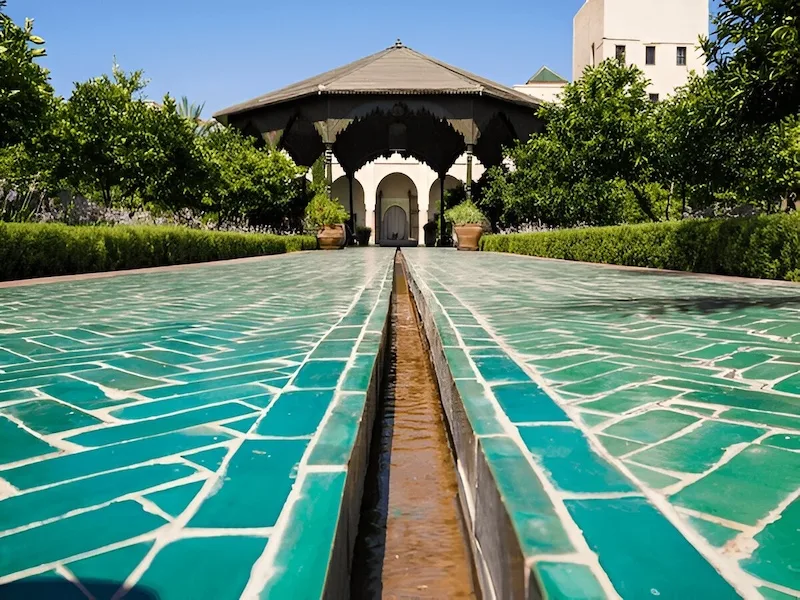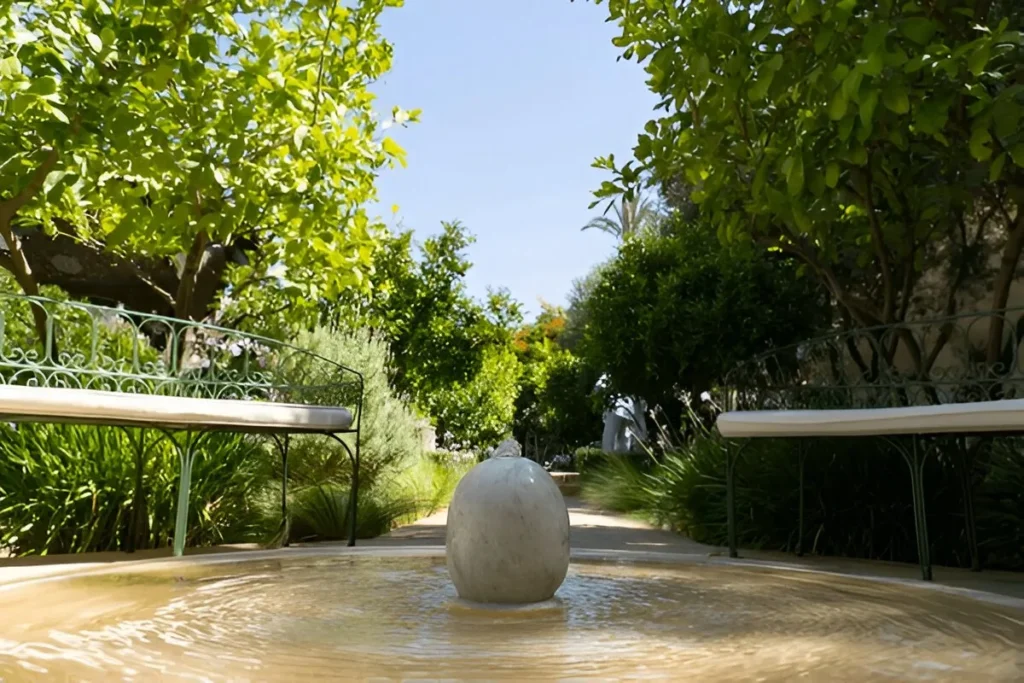You came for color and contrast. In Marrakech, you’ll find both—terracotta walls and snow-capped Atlas peaks framing pockets of deep green, still water, and birdsong. This guide helps you plan a smart route through the most beautiful gardens in the city, from icons like the Majorelle Garden to peaceful sanctuaries such as the Menara and the Agdal. You’ll get practical tips, history in plain language, and clear answers to your biggest questions—so your time among the palms, cacti, and citrus groves feels effortless.
Table of Contents
How to Use This Guide
- Who it’s for: You want a step-by-step plan to experience Gardens Marrakech without guesswork.
- What you get: Clear itineraries, LSI-friendly insights (Majorelle Garden, Menara Gardens, Secret Garden Marrakech, Agdal, Palmeraie, Anima Garden), practical transport notes, etiquette, and photo tips.
- How to read: Skim the quick picks first, then dive into the sections that match your interests—art, history, design, or family-friendly space.
Quick Picks: Best Gardens for Different Travelers
- If you love design and bold color: Majorelle Garden (Jardin Majorelle)
- If you want wide horizons and reflection ponds: Menara Gardens
- If you’re curious about Islamic garden design: Secret Garden Marrakech (Le Jardin Secret) and Agdal Gardens
- If you prefer sculpture and whimsy outside the medina: Anima Garden by André Heller
- If you need palm groves and quad-biking vibes: Palmeraie
- If you want a calm sit-down with tea: Many riads feature serene inner courtyards—consider booking a lunch or spa slot
Understand the Landscape: Why Marrakech Gardens Feel Different
To enjoy these spaces fully, you’ll want to know the logic behind them. Traditional Moroccan and Islamic gardens are planned around balance and water. Courtyards often use a four-part layout (chahar bagh) with channels drawing water to beds of aromatic herbs, fruit trees, and shade plants. In a dry climate, water becomes the star—shallow pools, rills, and reflective basins cool the air and calm the mind. You’ll notice the rhythm: tile walkways for clean lines, shade from palms and orange trees, and strong geometry guiding your steps.
Majorelle Garden: Color Therapy in the City

When you think of Gardens Marrakech, this is likely the image in your head—intense blue walls, chartreuse accents, and rare cacti. The French painter Jacques Majorelle began the garden in the 1920s; decades later, the site was lovingly restored. As you move through, you’ll sense a painter’s eye: cobalt against green, mustard against terracotta, bamboo screening sunlight into stripes. It’s compact, but every corner rewards your attention.
How to make the most of your visit
- Timing: Arrive soon after opening or in the late afternoon for softer light and fewer crowds.
- Tickets: Buy online when possible to dodge queues. Combo tickets with the nearby museum are handy.
- Photography: Avoid wide midday shots; step closer to capture textures—bamboo joints, cactus spines, tile patterns.
- What to look for: Succulents from multiple continents, bougainvillea arcs, and the famous blue that photographers love.
Menara Gardens: Atlas Views and a Giant Reflecting Basin
Menara is about space and sky. You stand by a grand reservoir with an unhurried view toward the High Atlas. Olive groves stretch wide, and the pavilion sits like a quiet sentinel at the water’s edge. You come here to walk, breathe, and watch locals enjoy a simple afternoon. Sunsets here can be glorious, and the water provides a mirror for your photos.
Tips for Menara
- Best light: Golden hour is ideal. The basin reflects color beautifully then.
- Pacing: Give yourself time to stroll; distances are bigger than they look.
- Family-friendly: Plenty of space for kids to explore; bring water and a hat.
Secret Garden Marrakech (Le Jardin Secret): Geometry, Water, and Heritage

This restored complex in the medina brings the principles of Islamic garden design to life. You’ll follow narrow lanes and step into an ordered world—channels feed symmetrical beds, and shaded seating invites you to slow down. Climb the tower (if available) for a view over rooftops; the contrast between medina buzz and garden hush is striking.
What you’ll appreciate
- Design clarity: Axes, symmetry, and water management on full display.
- Interpretation: Clear on-site panels help you understand the engineering behind the serenity.
- Location: Perfect pairing with nearby souks for a half-day plan.
Agdal Gardens: Royal Scale and Ancient Irrigation
Agdal is historic, expansive, and tied to royal estates. Its reservoirs and orchards speak to centuries of water mastery and agriculture. You won’t come here for flashy color; you come for scale, heritage, and the feeling of Marrakech as a living oasis, not just a desert city. When open to visitors, it offers a calm counterpoint to the medina’s energy.
How to approach Agdal
- Check access: Availability can vary. Look up current visiting details before you go.
- Bring context: Read about historical irrigation systems—khettaras and seguias—so the reservoirs make sense.
- Pairing: Combine with a leisurely lunch or a hammam session to balance your day.
Anima Garden: Playful, Artistic, and Photogenic
A short trip outside central Marrakech brings you to a garden that feels like a curated dream. Sculptures peek through foliage, and color pops from unexpected angles. If you’re exploring beyond the city, this offers a fresh visual language: whimsical installations set among palms, grasses, and flowers.
When Anima fits your plan
- Creative travelers: You like art, surprise, and storytelling spaces.
- Photography: Overcast days are great; colors come through without harsh shadows.
- Logistics: Confirm shuttle options or arrange a ride in advance.
Palmeraie: The Iconic Palm Grove
Think thousands of palms, broad skies, and a sense of the city meeting the desert. The Palmeraie is a landscape rather than a formal garden. You come for sunrise quad rides, camel treks, and the light through fronds. If you want shade and movement, this is your canvas.
Practical notes
- Time of day: Early morning is cooler and quieter.
- Activities: Combine a short ride with a tea break for a relaxed outing.
- Transport: Pre-arrange pickup; distances can be misleading on the map.
Reading the Design: What “Islamic Garden Design” Means for You
As you move across Gardens Marrakech, you’ll keep spotting similar patterns:
- Water as the core: Pools and channels do double duty—cooling air and guiding your eye.
- Shade as structure: Palms, citrus, and pergolas create corridors and outdoor rooms.
- Geometry with purpose: Straight paths and four-part layouts reinforce calm and clarity.
- Fragrance: Roses, jasmine, orange blossom—scent shapes memory here.
Knowing this helps you see beyond the surface. You’re not just walking through greenery; you’re walking through centuries of design thinking adapted to heat, light, and water scarcity.
Two Smart Itineraries for Gardens Marrakech
Option A: Classic Highlights in One Day
- Early morning: Majorelle Garden—arrive near opening; focus on detail shots and quiet paths.
- Mid-morning: Museum or a nearby café break.
- Late morning: Taxi to Le Jardin Secret—study the water channels and climb the tower.
- Lunch: Light meal in the medina.
- Afternoon: Menara Gardens—walk the basin and settle in for golden hour.
Option B: Slow Travel Over Two Days
- Day 1 morning: Majorelle and museum combo at a relaxed pace.
- Day 1 afternoon: Le Jardin Secret plus a tea stop nearby.
- Day 2 morning: Agdal Gardens (when accessible) to understand scale and history.
- Day 2 afternoon: Shuttle to Anima Garden; return to the city for dinner.
- Bonus: Drop a sunrise visit to the Palmeraie on either day.
Essential Marrakech Travel Tips for Garden Days
- Sun strategy: A hat, sunscreen, and water bottle matter here; shade helps but doesn’t replace hydration.
- Footwear: Walkable shoes you don’t mind getting dusty—paths swing from tiled to gravelly.
- Cash + card: You’ll find both in use; keep small change for taxis or tips.
- Modesty + respect: Dress comfortably and be mindful with photography near staff or other visitors.
- Tickets ahead: Reserve for popular sites to skip long lines.
- Backup plan: Heat spikes happen—schedule shaded or indoor breaks.
Best Times to Visit Gardens Marrakech
- Season: October–April is pleasant. Spring brings blossoms; winter has clear skies and crisp evenings.
- Time of day: Early mornings and late afternoons offer cooler air and kinder light.
- If you visit in summer: Aim for sunrise or twilight; plan a long lunch or spa break midday.
Photography Pointers: Make the Light Work for You
- Angles: Look for reflections in pools and basins—step low and align edges for clean geometry.
- Details: Get close to tiles, latticework, leaves, and shadows; these tell the story.
- People: Respect privacy; candid shots work best from a respectful distance.
- Editing: Slight contrast and clarity adjustments bring out textures without overdoing saturation.
What to Pack for a Garden-Focused Day
- Breathable shirt and a light layer for mornings or evenings
- Sun hat, sunglasses, reef-safe sunscreen
- Refillable bottle; many cafés will sell cold water nearby
- Power bank; mapping and photos drain batteries fast
- Small scarf or shawl for sun and style
Culture and Context: Gardens as Living Heritage
These aren’t just pretty stops. Marrakech’s gardens track the city’s relationship with water and agriculture. Olive groves aren’t ornamental; they are economic and culinary anchors. Citrus orchards scent alleys and supply kitchens. Even the most celebrated sites echo practical needs—cooling spaces, food production, and wise water use—translated into artful experiences for the senses.

Accessibility and Family Notes
- Strollers + wheelchairs: Paved sections exist, but some pathways can be narrow or uneven. Check current access notes before your visit.
- Shade breaks: Use pergolas and benches. A short pause every 30–45 minutes keeps everyone fresh.
- Quiet corners: Menara’s olive groves and many riad courtyards give children room to relax.
Food and Rest Near the Gardens
Plan short refueling stops between sites:
- Near Majorelle: Cafés for coffee, pastries, and light lunches.
- In the medina: Rooftop terraces around Le Jardin Secret; scan menus for salads, tagines, and fresh juices.
- Near Menara: Simple snacks and tea; for a full meal, head back toward Gueliz or Hivernage.
Responsible Travel: Keeping Gardens Thriving
- Stick to paths—plant beds are fragile, especially around seedlings and herbs.
- Carry any trash until you find a bin; wind lifts light items quickly.
- Support maintenance: official ticketing helps fund preservation.
- Use refillable bottles and consider a small tote for souvenirs rather than extra bags.
Pair Gardens with Nearby Experiences
- Majorelle area: Boutiques and galleries in Gueliz; a museum stop pairs naturally.
- Medina loop: Le Jardin Secret with a souk stroll and a rooftop tea at sunset.
- Menara afternoon: Combine the basin walk with a spa or dinner in Hivernage.
- Anima excursion: Add a valley drive or a viewpoint stop en route.
Sample Half-Day Routes
Design Lover’s Loop (Morning)
- Majorelle Garden for color and texture
- Short café break
- Le Jardin Secret for symmetry and water engineering
Wide-Open Views (Afternoon)
- Menara Gardens for the basin and mountain backdrop
- Golden hour photos, slow walk back
Understanding Water: The Quiet Hero of Marrakech Gardens
Without water, none of this exists. Historical systems brought groundwater through channels and basins to orchards and courtyards. That’s why you’ll notice careful distribution: narrow rills feeding squares of planting, large reservoirs buffering supply, and shaded pools cooling the immediate microclimate. When you pause by a basin, you feel the temperature drop and the city’s noise recede. It’s functional and poetic at the same time.
Etiquette: Simple Habits for a Better Visit
- Keep voices low in quieter corners; many visitors come to reset and reflect.
- Don’t pick fruit or flowers unless you’re invited to taste. Some areas are experimental or protected.
- Ask before photographing staff or craftspeople.
Budgeting Your Garden Day
- Tickets: Premium sites cost more; plan for at least one paid entry daily.
- Transport: Short taxis add up—batch your visits by area.
- Food + drinks: Café breaks are part of the rhythm; think of them as shade time as much as fuel.
Staying Cool and Comfortable
- Alternate sun and shade. Ten minutes under a pergola resets your body temperature.
- Sip water slowly and often instead of gulping once per hour.
- Carry a compact mist spray or a damp cloth in a zip bag for quick relief.
Where Gardens Marrakech Meets Craft and Culture
Patterns you see in gardens echo across the city—zellige tiles, carved cedar, and geometric screens repeat in madrasas, mosques, and riads. When you learn to read those lines in a courtyard, you’ll start spotting them on doorways, lamps, and textiles. Your photos and memories come together as a single narrative rather than a set of random snapshots.
Choosing Between Majorelle, Menara, Secret Garden, Agdal, Anima, and the Palmeraie
Short on time? Use this decision cheat sheet:
- First visit, two hours: Majorelle for color + a nearby café stop
- Half-day in the medina: Le Jardin Secret + rooftop tea
- Sunset views: Menara basin walk
- Heritage focus: Agdal (when open) for irrigation and orchard history
- Art + nature blend: Anima for sculpture among greenery
- Open landscape feel: Palmeraie at sunrise
Map Your Day: Simple Area Groupings
- Gueliz cluster: Majorelle + boutiques and galleries
- Medina cluster: Le Jardin Secret + souks + rooftops
- Outskirts: Menara + Palmeraie + Anima (with transport arranged)
Common Mistakes—and How You Avoid Them
- Trying to see everything in one morning: You’ll rush and miss the best moments. Spread your visits.
- Midday only: Heat and harsh light flatten colors. Aim for morning or late afternoon.
- No pre-booking for top sites: Lines can stretch; secure tickets in advance.
- Forgetting shade breaks: Build them in every hour.
A Short Glossary for Fast Learning
- Chahar bagh: Four-part garden layout often used in Islamic design.
- Rill: Narrow water channel that feeds planting beds and adds sound.
- Khettara/Seguia: Traditional systems for channeling and distributing water.
- Riad: Traditional house with an inner courtyard garden.
Putting It All Together: Your Garden Day, Your Way
Let’s condense the plan. Pick one cluster, secure one timed ticket, add one café or tea stop, and leave room to wander. Bring water, a hat, and curiosity. Think in contrasts: color and quiet, shade and sunlight, geometry and greenery. That contrast is the soul of Gardens Marrakech.
Final Checklist Before You Head Out
- Tickets and opening times saved on your phone
- Taxi pickup points or rideshare apps ready
- Hat, sunscreen, and refillable bottle packed
- Camera or phone with extra storage; power bank charged
- Cash for small expenses and tips
Make Your Marrakech Moments Bloom
You’re ready. Choose your route, reserve the sites that matter to you, and give yourself time to slow down in the shade. If you want a tailored route, local bookings, or help pairing gardens with food, hammams, and shopping, tap the button below and tell us your dates and interests. Your plan for Gardens Marrakech starts now—build your custom garden itinerary today.
How many gardens can you visit in one day?
Three is realistic: Majorelle first, Le Jardin Secret late morning, and Menara toward sunset. If you prefer to linger, choose two and add a relaxed lunch.
Do you need a guide?
Not required, but a knowledgeable guide adds depth—especially at sites with irrigation heritage like Agdal. If you’re a design fan, even a short guided walkthrough can sharpen your eye.
Are there dress rules?
No strict code in public gardens, but lightweight, modest clothing keeps you comfortable and respectful. Carry a scarf for sun and breezes.
What about tickets and lines?
Popular spots can be busy. Book timed tickets when available. Arriving within 30 minutes of opening often pays off
Is summer a bad idea?
Not at all; you’ll just want early mornings, shaded breaks, and extra water. Plan indoor museum time during the hottest hours.






